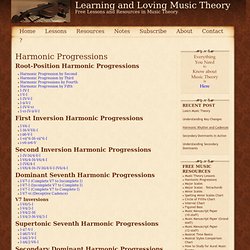

How I Met Your Mother (Acoustic Fingerstyle Guitar Cover) ChordFind.Com - Guitar Chord Finder. 12 Essential Blues Turnarounds. By Andy Ellis Are your blues a little tired?

Crave some fresh sounds? Nothing rejuvenates a 12-bar groove faster than a fancy turnaround, and we’ve got a dozen of them in this guitar lesson. You can use these moves onstage tonight or at your next jam session. In addition, as we learn each turnaround, we’ll analyze the musical principles that propel it. Guitar Lesson Click here to download the power tab for this guitar lesson. Form and Function First, a definition: A turnaround is a short (typically two-bar) passage at the end of a blues progression that’s designed to elegantly walk you to the V7, which in turn resolves to the I7 in bar 1.
Contrary Motion A turnaround derives its energy from tension and release. Take a close look at the intervals in bar 1’s second, third, and fourth beats. Contrary motion also powers Ex. 2. You don’t have to arpeggiate the intervals. Contractions Many turnarounds feature a moving line against a repeated, static note. We’re in the key of C. Minor CAGED Arpeggios: Part II. Writing Original And Interesting Chord Progressions. Part I. 10 Ways to Play the Most Beautiful Open Chord Shapes.
10 Ways to Play the Most Beautiful Open Chord Shapes Part I A great way to make your chord progressions and songs sound awesome is to use open chord shapes.

I always love to use these chords to add some flavor to my chord progressions. One of my favorite chords is Fsus2.That chord has got the whole package for me. It’s sounds beautiful, gentle, tight, cool and rough at the same time. When you move an open chord up the neck the name of the chord changes and the chord gets extended with 1 or 2 notes. While you can play barre chords at any fret on the fingerboard, open chords can only be played at certain frets. Because of all the extended chord names I didn’t bother to name every single one of them. It’s all about incorporating these chords into your songs and chord progressions, putting your creativity to the test, experimenting with all the possibilities, replacing some basic chords for these extraordinary ones, learning to hear what sounds right and what feels good.
Have a great time! Major CAGED Arpeggios: Part II. Learning and Loving Music Theory - StumbleUpon. Kelvin, You actually caught a mistake on the roman numerals!

Thanks, I’ll have to fix that. The first and last chords of the progression are not 7th chords. Somehow I inadvertently typed “I7″ on the first chord of all the major keys. (Notice that I didn’t do that for the minor keys.) In the classical tradition, for the sake of stability, the first and last chords of a circle-of-fifths progression are usually triads, not 7th chords. Harmonic Sequences Part 2 In the jazz tradition all chords usually are 7ths, in which case the progression will start and end with 7th chords.
Thanks again for your interest and input.